Command & Conquer Through the Years: A Retrospective Analysis
Examining the path of one of gaming's most revered strategy franchises
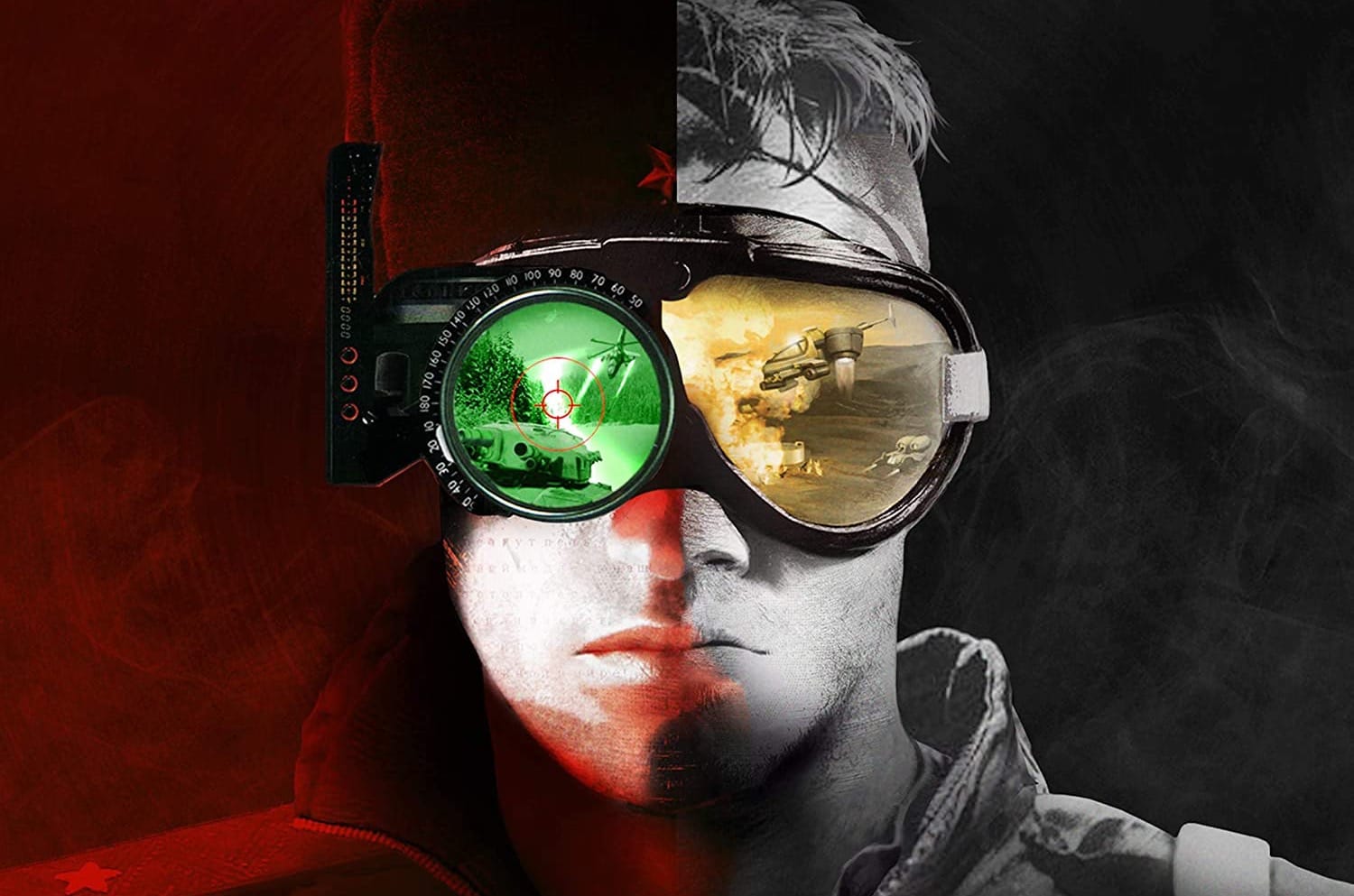
For my upcoming book about RTS games, I took it upon myself to replay the entire Command & Conquer series, as I had only played bits and pieces of them back in the day. Returning to the game that defined the entire genre at the time was interesting, as it also meant going back to a different time in game design and game presentation. Whether or not the games hold up to this day is debatable, but the style is certainly timeless.
I'm a Mechanical, I'm a Mechanical...
The original game (Command & Conquer, known colloquially as C&C) holds fond memories for many RTS fans, being the one that truly kickstarted the genre. Even after 25 years, the style of the game has gone from cutting edge to now a time capsule of '90s FMV and animation. The live-action scenes may be a bit hokey, but that's part of the charm.
The faction design may not have the same depth that StarCraft would achieve and set the standard for, but it does a good enough job here given the challenge of the AI. GDI units are stronger, but in a game built around counters, being able to field more units than your opponent is the greater advantage.
In a funny way, while NOD is technically weaker with all their units, they make up for it thanks to the AI and pathing in the game. You are allowed to run over infantry with heavier vehicles, and this completely breaks the balance of the game in favor of Nod. The medium tanks by GDI are too slow to reliably run over units and the scatter command can get away from them, but not with light NOD tanks. Most of my wins in the game came from a mass army of light tanks running down all the infantry, including the anti-vehicle ones. This is important as the AI for units is a bit weird when it comes to moving and shooting. Flamethrowers and grenadiers will destroy enemy infantry but require them to get close enough to target and fire on them.
The mission design goes all over with a focus on baseless missions and those when you do have to build. The AI is very aggressive when it comes to rebuilding, and your goal in every situation is to destroy the command yard to take it out.
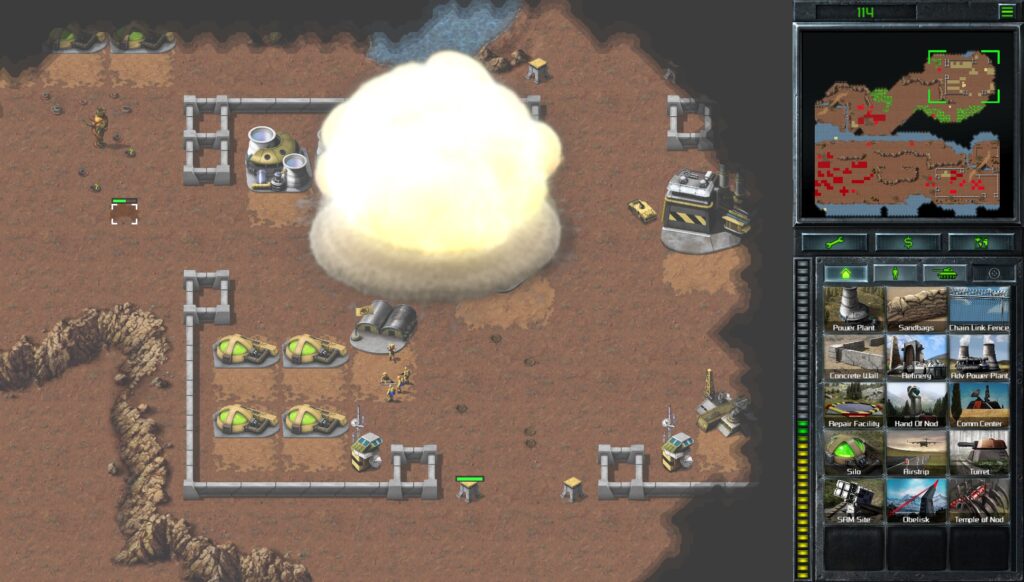
The faction design may not have the same depth that StarCraft would achieve and set the standard for, but it does a good enough job here given the challenge of the AI.
The challenge of these games is that both factions are given maps where they simply don't have the easy unit to win.
With GDI, you must take on several bases with anti-infantry defenses without any strong vehicles, while NOD must deal with airstrikes with some of the worst anti-air defenses in the entire series. With these early games, you're not really playing a RTS battle, but a RTS puzzle that you need to solve in order to win. The GUI here, even in the remaster is still a bit clunky compared to modern examples, and not having the ability to attack-move will be one of the biggest things to get past throughout the game. The music still rocks with many classic tracks, and if you're looking for the best possible version, then definitely play the remaster released in 2020.
Hell March
The next game in the series, C&C Red Alert delivered a spin-off that would turn into its own universe, offered up more of the memorable music made famous by the original, and included some of the strangest FMV videos. This also kicked off a tradition by Westwood with swapping the faction strengths between games – now, the allies have the weaker, but more agile units, and the Soviets have stronger, but more expensive ones.
The mission design as a whole is given a huge remodel, with larger maps, more advanced command missions, and...sigh, naval battles. The naval missions are my least favorite in any RTS, and this one has many of them. Like before, you are going to have to figure out how to win against an AI that loves to keep building while its command yard is alive. Pathfinding is still wonky in places – flamethrower towers and those super jumping attack dogs are going to cause a lot of problems. While it doesn't have the same charm as the original in terms of the story, it does set the stage for more craziness down the line.
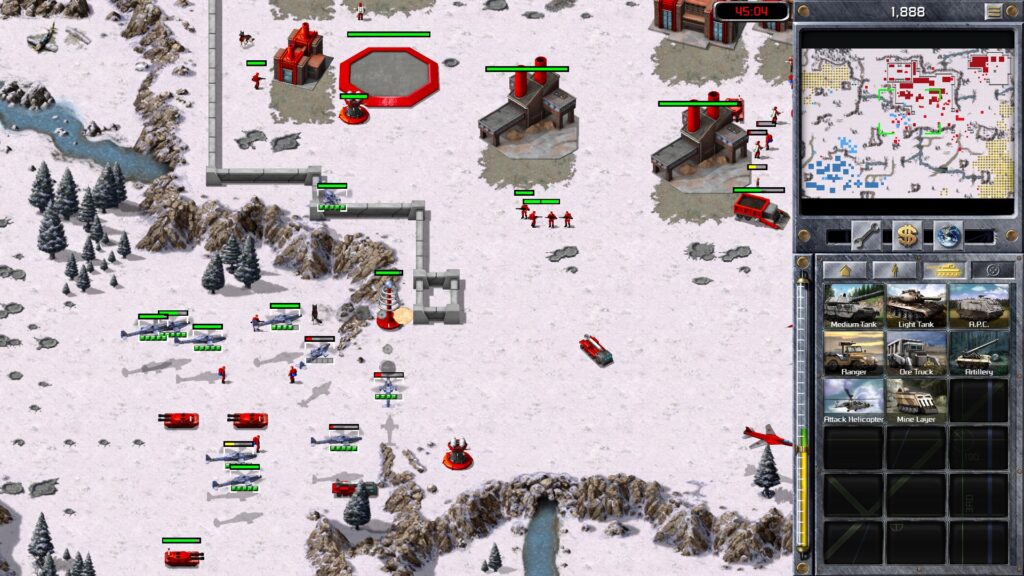
The mission design as a whole is given a huge remodel, with larger maps, more advanced command missions, and...sigh, naval battles.
You can tell that this started out as more of an expansion/side project to the original game, as much of the GUI and structure are the same, and it wouldn't be until the next game that the production value and design took a giant step forward.
Of the classics, Red Alert is just okay for me, but I don't remember it as fondly as the original with the exception of the game's main theme music, Hell March 1.
A Sci-Fi Channel Original Movie
The third game in the series, Tiberian Sun, is where you can tell that Westwood really got a budget for the movies, and seeing the "a part of Electronic Arts" tag at the start caused some pain in my soul. Once again, what was one cutting-edge 24 years ago is now more cheesy, but it holds up. Returning to this one, it was a bit of a shocker to see professional actors like James Earl Jones chewing through the scenery along with Joe Kuccan.
This one is interesting in terms of unit design; we're now in the period of game design where the factions had to be as different from each other as possible. So you have GDI with disc-throwing grenadiers, NOD with tunneling APCs and flame tanks, and those NOD artillery guns are perhaps the greatest ground unit of all time in terms of how they break the game.
The mission design in this one gets more diverse compared to previous games. Many missions are part of a chain in the story, and you are free to decide which ones to do to grant you an advantage in the main one. If you want, you can ignore them for a harder mission but that will cut down the playtime. This is the one where in terms of faction design, I'm all-in for NOD. Like the previous games, unit counters are a huge deal and while everyone has more health, the counter damage is far stronger. A few rocket infantry will shut down air units quite easily, and the APC rush with NOD's underground APCs is just fun to do.
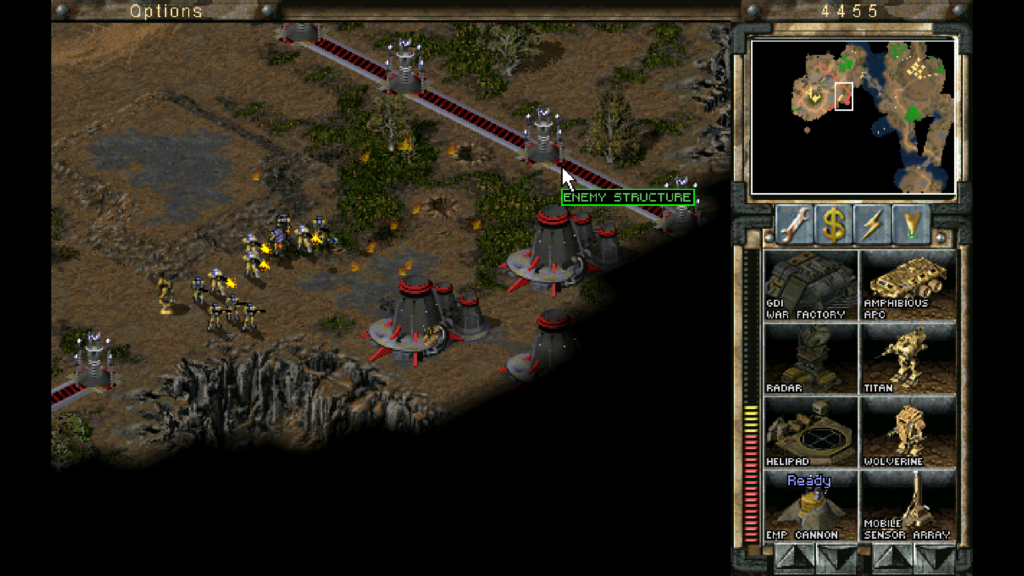
Speaking of NOD, this is also where the developers really embraced them as the cool faction and gave them the best toys. Of all the strategy games at the time, including StarCraft and Warcraft, NOD became the official "troll faction" of RTS. You have an army that can rain toxic missiles down, completely stealth their entire base and units, and send APCs and tanks underground to harass. Then they get damn Terminator cyborgs and stealth tanks, and the aforementioned heavenly artillery guns. Meanwhile, GDI gets jetpack troops and sonic tanks, which are still cool, but again, with the counter system in play, they get taken down quite easily.
Most of the wonkiness that exists in Tiberian Sun is the same as all the older games thanks to the UI. We're still not at the point where there is an actual attack-move command, and the game really likes the mission objective: "literally kill every single unit and building and wall section of the enemy." The mission design is well done, but it is broken by the AI and the defenses. The artillery gun by NOD has no equal – there is no ground unit that counters it. Even when the GDI gets their own siege unit in the expansion, it has a shorter range, less armor, and it's not as accurate. This, combined with the pathfinding and AI makes some missions just too annoying to enjoy playing. This is a shame, as the game features some interesting mission designs all the way through the expansion.
All that said, I would still recommend playing this one for the time capsule effect of seeing how sci-fi changed from the 90s to the 2000s.
Hell March 2
Red Alert 2 would become the last C&C game officially worked on by Westwood. Keeping with making their factions as cool as possible in the mold of Tiberian Sun, the Allies and Soviets are now fully different in terms of their units and strategies. The Allies get more flexible aircraft and jetpack soldiers, while the Soviets get Tesla power, apocalypse tanks, and soviet squids.
Both sides feel good and distinctive to play, helped by some of the best variety of mission designs in the series. You still have a mix of base and base-less missions to do, but there are more factors to deal with than just killing everything that moves. The AI has also been programmed so that, once it loses its major buildings, just to send everything at the player to end the match as quickly as possible.
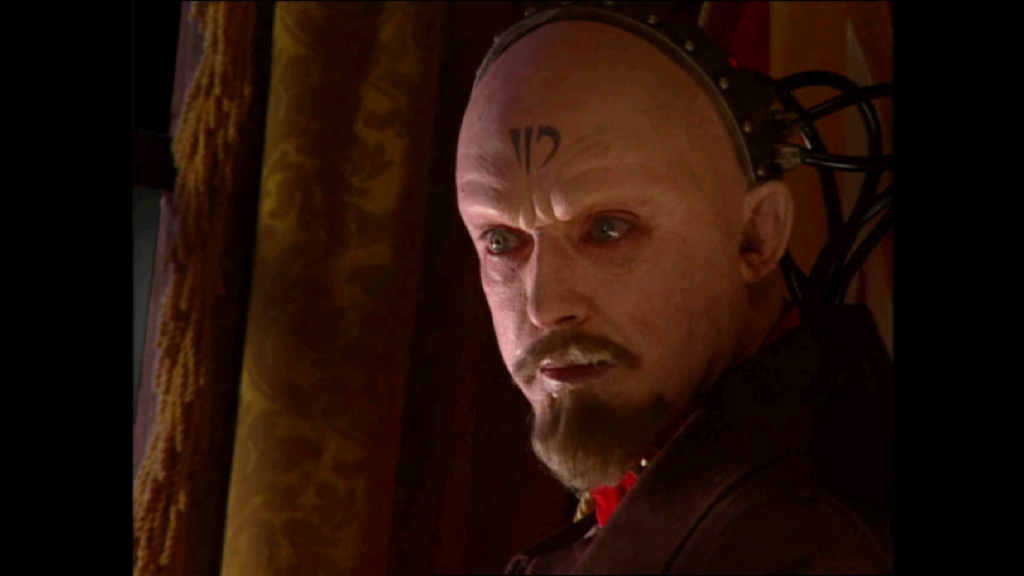
The Allies get more flexible aircraft and jetpack soldiers, while the Soviets get Tesla power, apocalypse tanks, and soviet squids.
The FMVs are a joy to watch and marvel at early 2000s technology and popular actors at the time. In terms of improvements, players can finally set rally points from buildings, but there is still no attack-move command.
For the multiplayer side of things, Red Alert 2 still holds up as one of the more interesting RTS to play, as the Allies and Soviets are now delineated into different nations that have one unique unit added to their pool, much like the Age of Empires series. I really like the expansion that forces the player to fight against Yuri with his own tricks and buildings to deal with in even more unique missions. Every mission can be won through using brute force, but there are often ways to completely shut down the enemy fast if you know what you're doing.
This was a great one to revisit and a fitting, albeit sad, swan song for Westwood Studios. If you have the chance to replay any of the older games, this is one you should check out and there are fan mods that add even more content.
C&C 24
C&C Generals was officially when EA Los Angeles took over as the developer for C&C, and it represents that major shift in tone and design. Released in 2003, the game was released during the era of heightened patriotism following the events of 9/11. Instead of alternate worlds, the game takes place in the "real world" with players controlling the US, China, and the Global Liberation Army (the stand-in for Middle-Eastern terrorists). Strangely enough, this is the most dated part of replaying the Command & Conquer games, with the tone now becoming more serious.
Instead of three separate campaigns, Generals features a loose set of missions split between the three factions, starting with China, then the GLA, and finally ending with the US. During this period, you can tell that EA Los Angeles was pushing C&C to become more eSports-friendly. Unit pathfinding and AI are far worse compared with previous games; you must set units to either attack or guard move if you expect them to do anything when you're not watching. The rock-paper-scissors balance of the series is spiked here – unit counters will destroy their targets very quickly, but the AI itself doesn't do a good job of prioritizing targets. I watched ten tanks attack a solo infantry unit while enemy tanks picked them off.
The problem is that the developers want to have their cake and eat it too, rewarding the player for focusing on every single encounter, but you can't do that and reasonably build an army and manage your economy at the same time. Not having the vertical command bar for buildings and construction at all times really hurts this one in my opinion. When I send a fully stocked army to fight something smaller, and their supposedly weaker units kill my guys immediately, it doesn't feel right.

The problem is that the developers want to have their cake and eat it too, rewarding the player for focusing on every single encounter, but you can't do that and reasonably build an army and manage your economy at the same time.
This is the first 3D RTS in the series and it shows, with very blocky polygons and a lack of textures for everything. The one aspect of Generals I do like is the sub-factions of the different generals introduced in Zero Hour. Each general pushes the faction in a different direction, getting specific strengths and weaknesses compared to the base one. I like when RTS games allow the player to customize their factions and do things beyond just the standard build orders; it's why I still love the home city concept from Age of Empires 3. Generals does not hold up for me as someone who didn't enjoy competitive RTS play and UI/UX, and it hits especially harder after going through the originals up to this point.
Kane Lives
Command & Conquer 3: Tiberium Wars and its expansion are viewed by fans as the real ending to the Tiberium side of the franchise. Having not really played it up until now, I must agree with them. The pathfinding and general AI are much improved from what Generals offered, as are the 3D graphics (which still hold up today), with greater use of effects for lasers and other weapon shots.
The campaign structure in this is my favorite of the series, allowing players to replay missions easily, seeing how they did and what they missed. There is still micromanagement to be found and I'm not a fan of the hotkeys used, but I do like that the game allows you to rebind every key to your choosing.
The return of FMVs is a great thing, but the tone is very different, and in a way represents how Sci-fi and TV changed from the 90s to the 2000s. The 90s was the era of camp and cheese for action shows, while the next decade was when drama and seriousness became more popular. Still, Joe Kuccan knows what he's doing, and seeing Billy Dee Williams and Michael Ironside on the GDI side was a hoot.
However, there is one big problem with the game that does knock off a few points; the game's final patch rebalanced aspects for multiplayer, but also impacted the single-player campaign. There are maps where the enemy doesn't need to spend money to pump out infinite units for defense and attacks. On one map, I did not even have enough Tiberium available to build an army with which to attack the enemy. If you're hoping to beat the game on hard difficulty, you had better be a pro eSports RTS player. It's unfortunate, as I can see why fans treat this as one of the better modern C&C games, but when I watch my anti-infantry tower lose to infantry while my AA guns don't stop enemy aircraft, I can't fully recommend the base game in this state if you're looking for a more casual experience without mods.
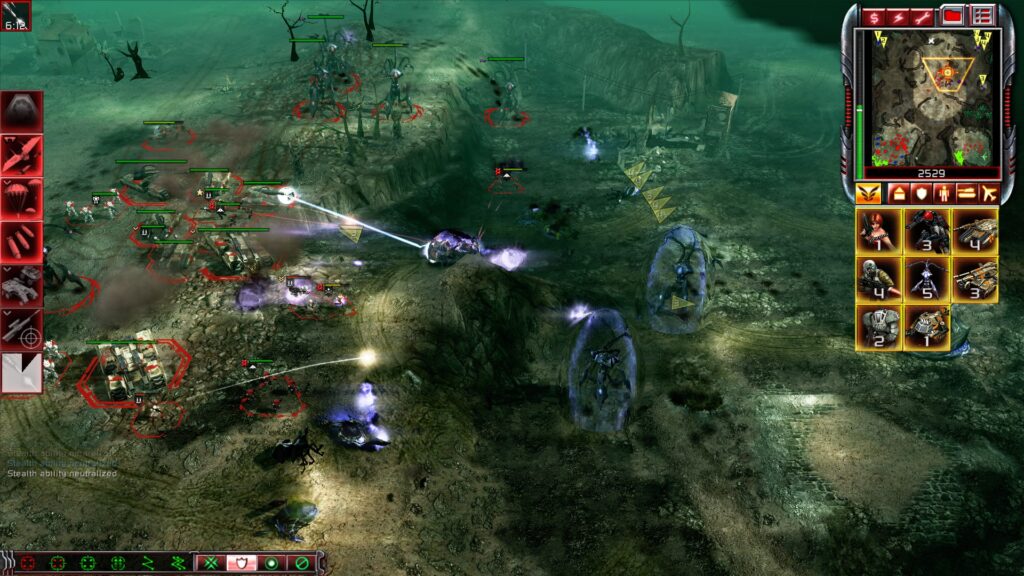
The problems are fixed with the excellent expansion Kane's Wrath. It adds missions that try to fill in the pieces before and after the base game, along with new sub-factions for each of the three main groups. The sub-factions come with unique tech upgrades and units that push the factions in different directions. The game was also released after the major balance patch to the base game, so the entire campaign is balanced around the multiplayer changes. I would still recommend playing them both, as they do sadly represent the final real Tiberium setting games. In terms of unit designs, continuing from the previous two, all three factions are 100% distinct from each other, and this is made more so with the sub-factions introduced in the expansion. Despite the balancing issues, I would still put this as my second favorite in the series from a design standpoint.
Space!
Red Alert 3 is the final game on the Red Alert side of the franchise, and they went big here. This is the game where the production values are at their highest – with some of the best-looking and most detailed units of any RTS. The FMV cutscenes reach peak cheese factor and almost remind me of the "Sharknado" franchise, especially with all the celebrities coming in to ham it up.
For our game, we get three completely different factions like Command & Conquer 3, each having unique units. This is by no means a carbon copy of the previous games and it does play the most differently (next to Generals) from the standard formula. Every map is designed as a co-op experience, and the AI does a really good job in this one. In return, Red Alert 3's map design is good, but the missions lack the variety seen in previous games, as every map was designed to fit two players. The enemy AI is weak here, as it's not really playing the same game as you are, obviously due to the 2v1 effect on most maps. It will not rebuild structures, and sniping essential unit productions early will make any map a breeze.
The gameplay is the most micro-intensive of the series, but that's still limited compared to other RTS. Every unit has a secondary or special feature that can do everything from changing its form to launching a special attack, and much more. It can be a bit much to keep track of, but it offers a lot of flexibility once you figure it out. The biggest difference in this one compared to previous games, which honestly gives me pause when I consider it, is how resource gathering is far simpler with only one harvester per ore field allowed. It makes it far easier to set up your economy, but also very easy for someone to disrupt it, and removes some of the advanced play and economy strategies of previous games.
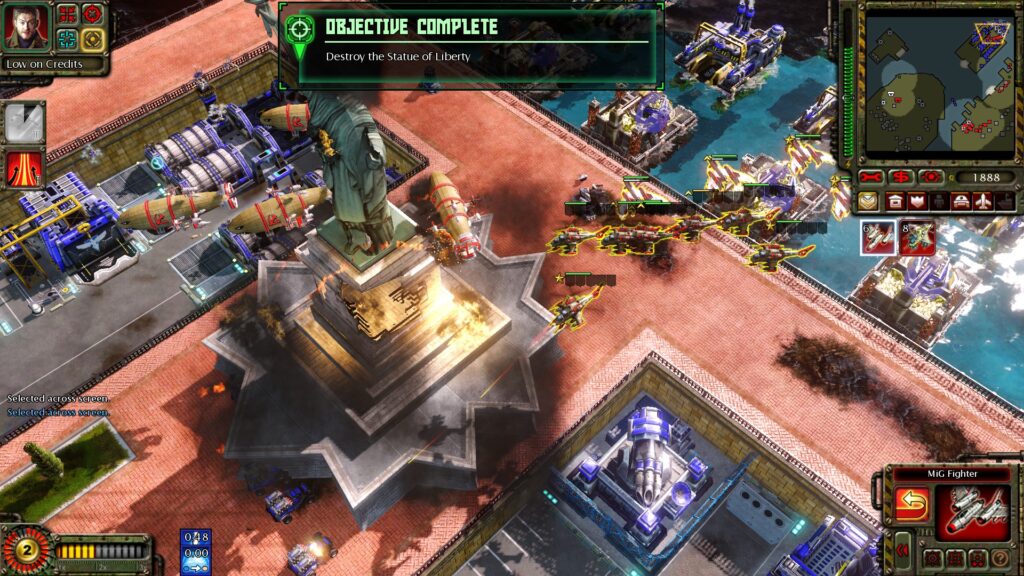
The gameplay is the most micro-intensive of the series, but that's still limited compared to other RTS.
Faction powers from Generals make a return as well, giving players more abilities to use during the heat of battle, adding even more micro-play to the proceedings. The expansion may not add as much in terms of story compared to Kane's Wraith, but I do love the idea of puzzle-based challenges with the Commander's Challenge mode. Each map challenges the player to take on the opponent under unique situations that were not featured in the base game, and these are all played solo as well.
If you're looking for the mission variety and 1v1 nature of previous games, then Red Alert 3 may be disappointing. Today, it stands out as the last hurrah of the franchise and it's different enough to make it worth checking out for its gameplay and cutscenes.
Ending With a Dud
The final game that would, unfortunately, be the swan song for the main Command & Conquer series is Tiberium Twilight, EA's attempt at formally making C&C into a competitive eSport. It features far smaller army limits, always-online connections, and the worst use of account progress for multiplayer. After a lot of trial and error, I did manage to get it working, and I was rewarded with the worst entry in the series.
The concept of having different MCVs that act as the sub-factions of previous games is a good one, but the way it's done here simply doesn't work. It reminds me a lot of when I played Gotham Knights, in that to make the different characters work, they took one fully-fleshed-out character (Batman) and split him four ways. Here, you can’t build defenses unless you are the "defense" class. The idea is that you can play the campaign in co-op, much like Red Alert 3, but there is no AI to help you or provide backup here, which fundamentally breaks the game's missions. Since each player is drastically limited in terms of units they can build, going up against an AI that can pump out more units means that you will never win the numbers game, and that makes it impossible at the start to make any progress.
I would have rather made it such that for single-player mode, you simply have the command total of two MCVs to make things balanced. Sure, you do get upgrades for each class, but they're tied to account level, which makes the single-player frustrating and I would imagine the multiplayer impossible for starting with a brand new account.
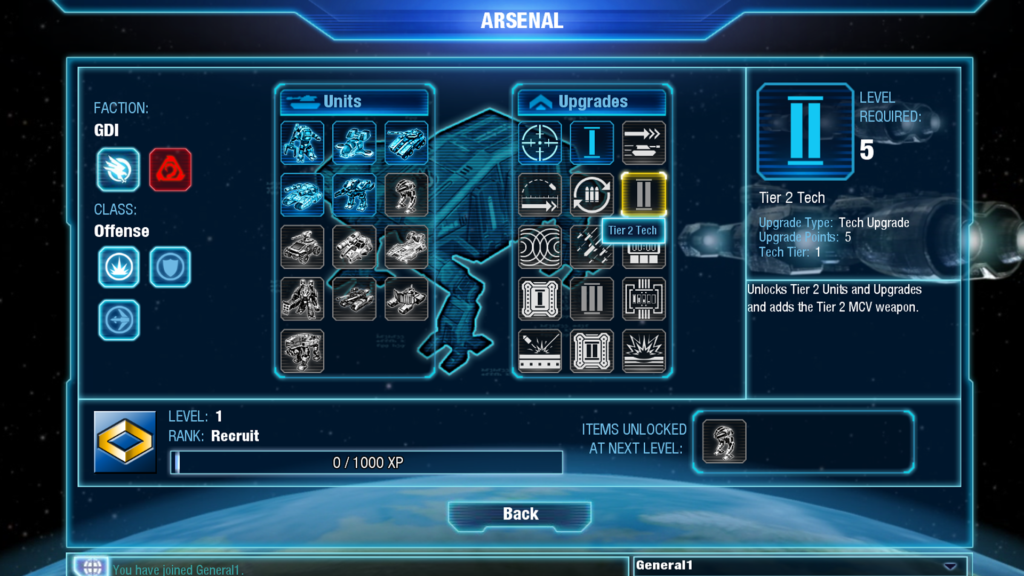
There is next to no personality in the different units, and while there are far more units here than in previous games, this only adds bloat to the new counter system. Even the different armor types only serve to make things even more confusing compared to previous entries in the series. Since you don't start with any anti-building units, it means fighting other MCVs and structures takes forever. Also missing are the delightful cutscenes and cheese of previous entries. In the span of four missions, my "wife" (who had about 3 minutes of screen time) is killed, which makes it hard to care considering my character is a camera and doesn't say anything throughout the entire campaign.
I think C&C4 had some good ideas for making a faster-paced RTS, but how it's presented here just doesn't work. You can't have low unit totals with low-quality units, and tying everything to an account level that most people aren't going to jump through hoops for was a bad idea.
How Does it Hold Up?
Looking back, Command & Conquer is a franchise that is defined by its aesthetic. While it never gets to the same level of technical precision and balance that made StarCraft work, it didn't need to. The great FMV scenes, variety of missions and units, and fantastic music made it all work. The irony is, you can tell where EA really put their finger on the scale to make things different and more competition-friendly (Generals and C&C4), but these turned out to be the worst entries in the series; they don't hold up, and simply aren't memorable.
Source: YouTube.
It also stands as an important lesson for RTS designers today that style is certainly a missing element from a lot of these games. Units as memorable as the Kirovs, Avatars, and even the GDI orbital laser are nowhere to be seen. Unit variety is also a huge point and why these games are so memorable in terms of strategies and tactics. I still think the idea of sub-factions from Zero Hour and C&C 3 has value, but I've yet to see any other studio capitalize on this style of design.
From a GUI/UX perspective, the series has come a long way. The sidebar GUI still is one of my favorites – providing easy unit building and construction anywhere on the map, and why Generals does not work for me. With that said, hotkey standardization is mixed across all the games, and no easy way to set control groups from unit production does hurt things for casual players. Not having attack-move functionality until Red Alert 2 was wild to go back to. For me, the gold standard of GUI and hotkey design is still Rise of Nations.
It has been a bittersweet trip down memory lane, having finished some of the best RTS games released in the past 30 years. I just don't know if we'll ever hear about another Kirov reporting ever again.
